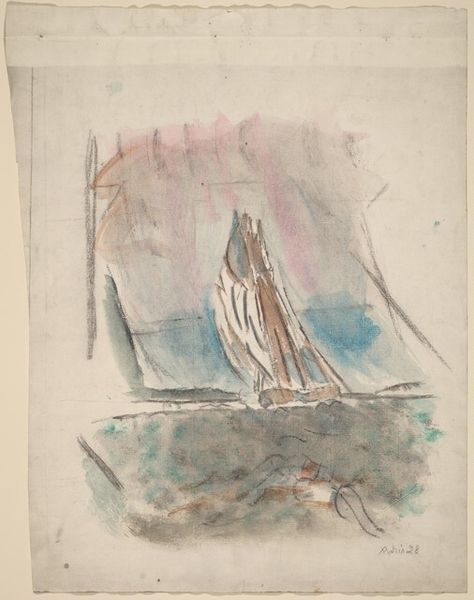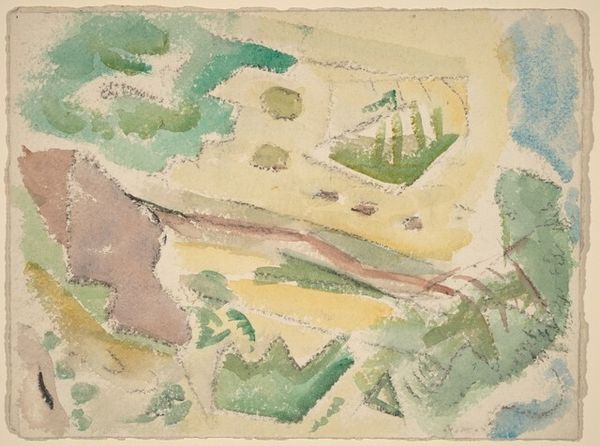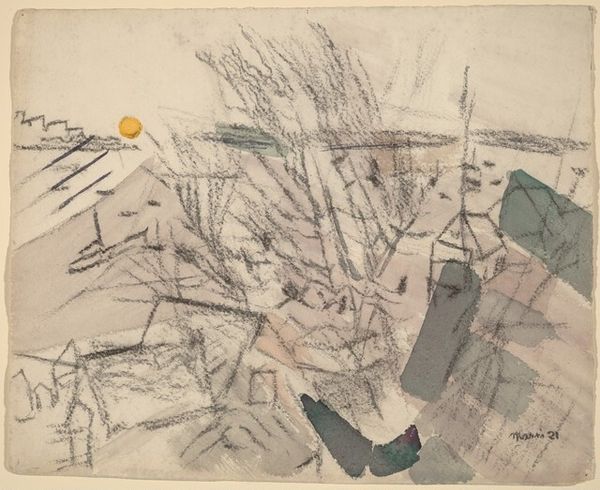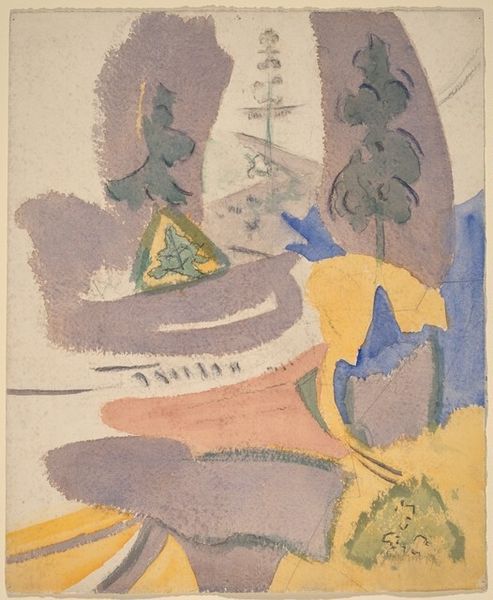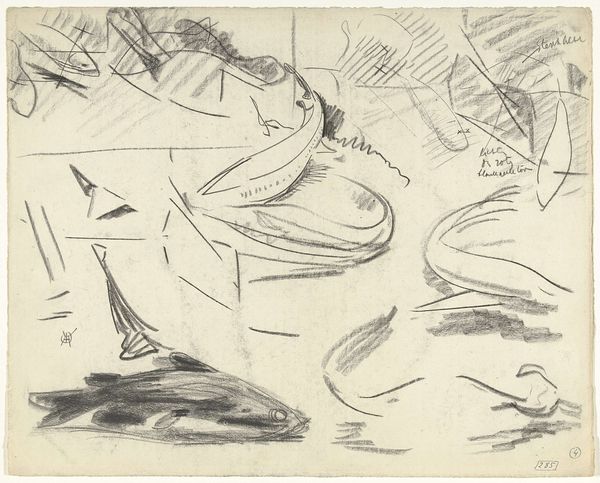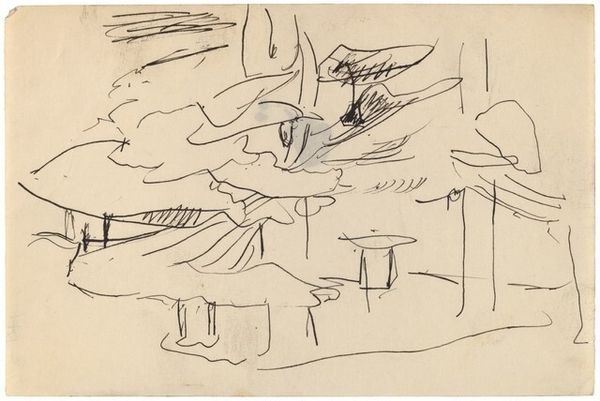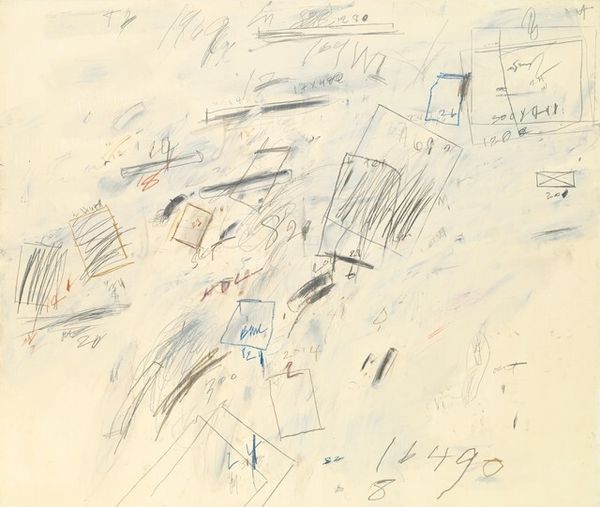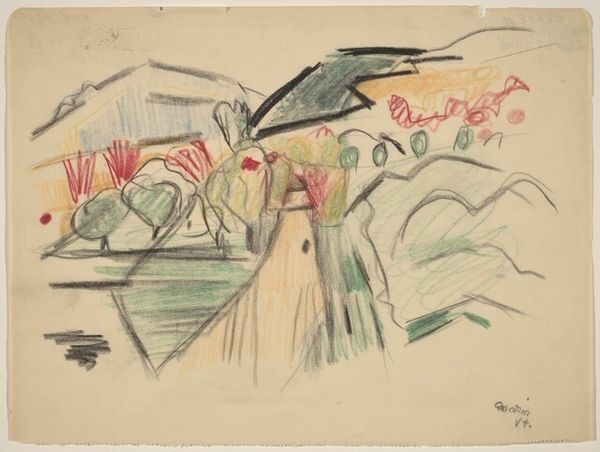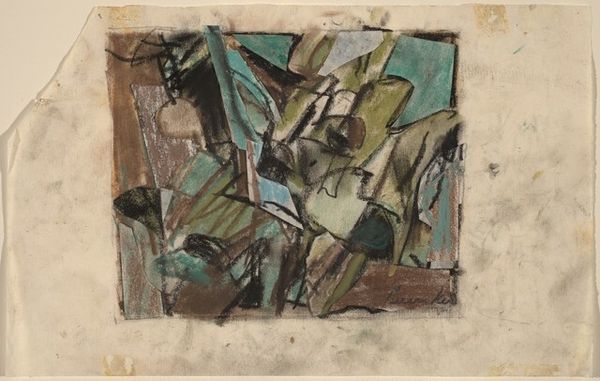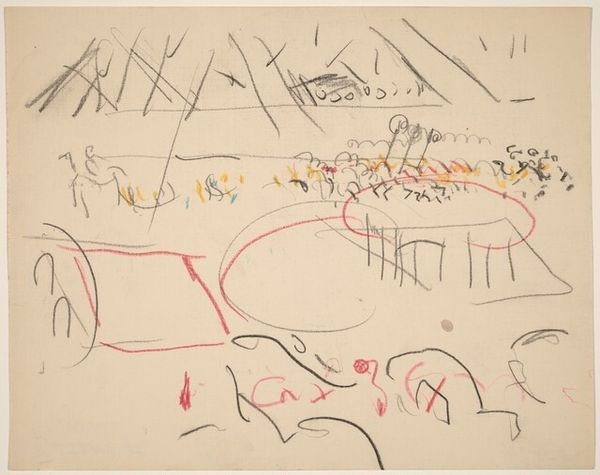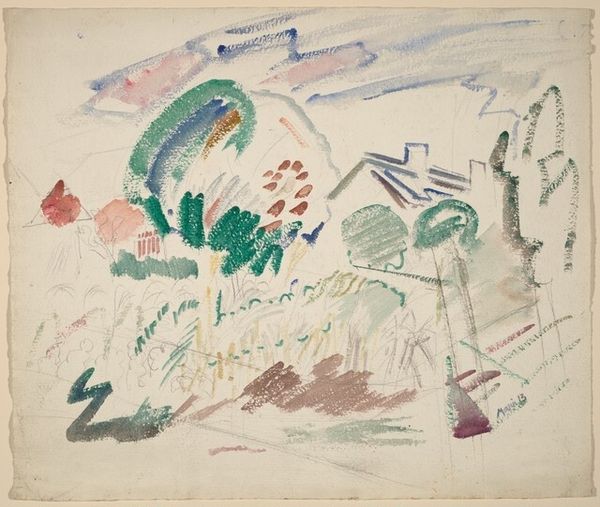
drawing, watercolor
#
drawing
#
landscape
#
watercolor
#
coloured pencil
#
expressionism
#
line
#
modernism
#
watercolor
Dimensions: overall: 38.8 x 4.5 cm (15 1/4 x 1 3/4 in.)
Copyright: National Gallery of Art: CC0 1.0
Curator: We are looking at "Deer Isle, Maine," a watercolor and charcoal work on paper by John Marin, created in 1923. It exemplifies Marin's unique approach to landscape painting. Editor: My initial reaction is one of vibrant instability! The lines seem to be vibrating with a raw energy, and the color palette—soft blues and russets—creates a rather unexpected juxtaposition. Curator: Exactly. Marin's engagement with the Maine coast extended beyond mere depiction; it was about capturing the forces that shape the land. I would consider how his seascapes represent the tension between humans and their environments, specifically on an island that is both idyllic and subject to natural hardship. Editor: Focusing on the materials—the fluid transparency of watercolor contrasts wonderfully with the decisive linearity of charcoal. Marin used the properties of both media to establish this feeling of spontaneity. One wonders, what supports were commercially available at the time and the effects that might have had? Curator: It’s fascinating to place Marin within a broader socio-political context. In the early 1920s, American modernism was gaining momentum. "Deer Isle, Maine" represents a tension: Marin embraced European avant-garde aesthetics while remaining firmly rooted in the American landscape and the traditions of landscape painting that precede it. The Great Migration would have also brought with it, I argue, entirely new forms of looking at landscapes, complicating any singular perspective that a painting such as this offers. Editor: I'm more inclined to emphasize the immediacy of his process. Look at the visible brushstrokes, the bleeding colors. It speaks to an active encounter with the location, recording it in the way an experience can be, not an accurate description, per se. The loose lines could reference sailing masts, a network of lines of maritime labor—with nature as a constant collaborator and opponent. Curator: Yes, and let's consider how Marin challenges traditional notions of beauty. It's not a picturesque view. Instead, he's presenting a raw, dynamic landscape, reflecting perhaps a modernist desire to disrupt bourgeois sensibilities and an increased freedom in the construction of gender and national identities. Editor: So, from my perspective, what seems crucial here is how Marin made a work that pushes the very limits of the medium and embodies that moment of encounter on Deer Isle in 1923. Curator: Indeed. Marin’s unique visual language opens up conversations around the intersection of place, identity, and the very act of seeing. Editor: For me, the value rests in how his method renders an active state.
Comments
No comments
Be the first to comment and join the conversation on the ultimate creative platform.


